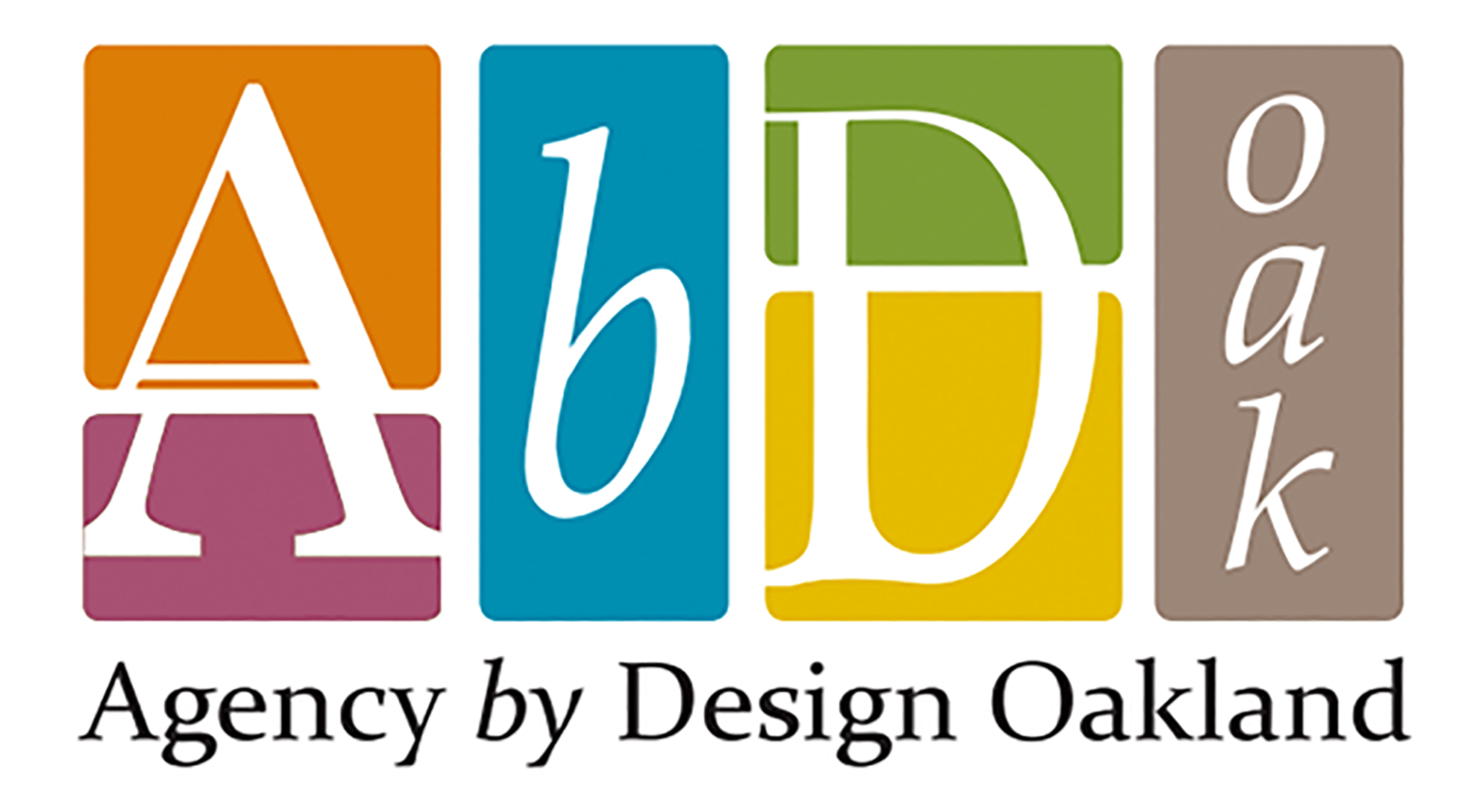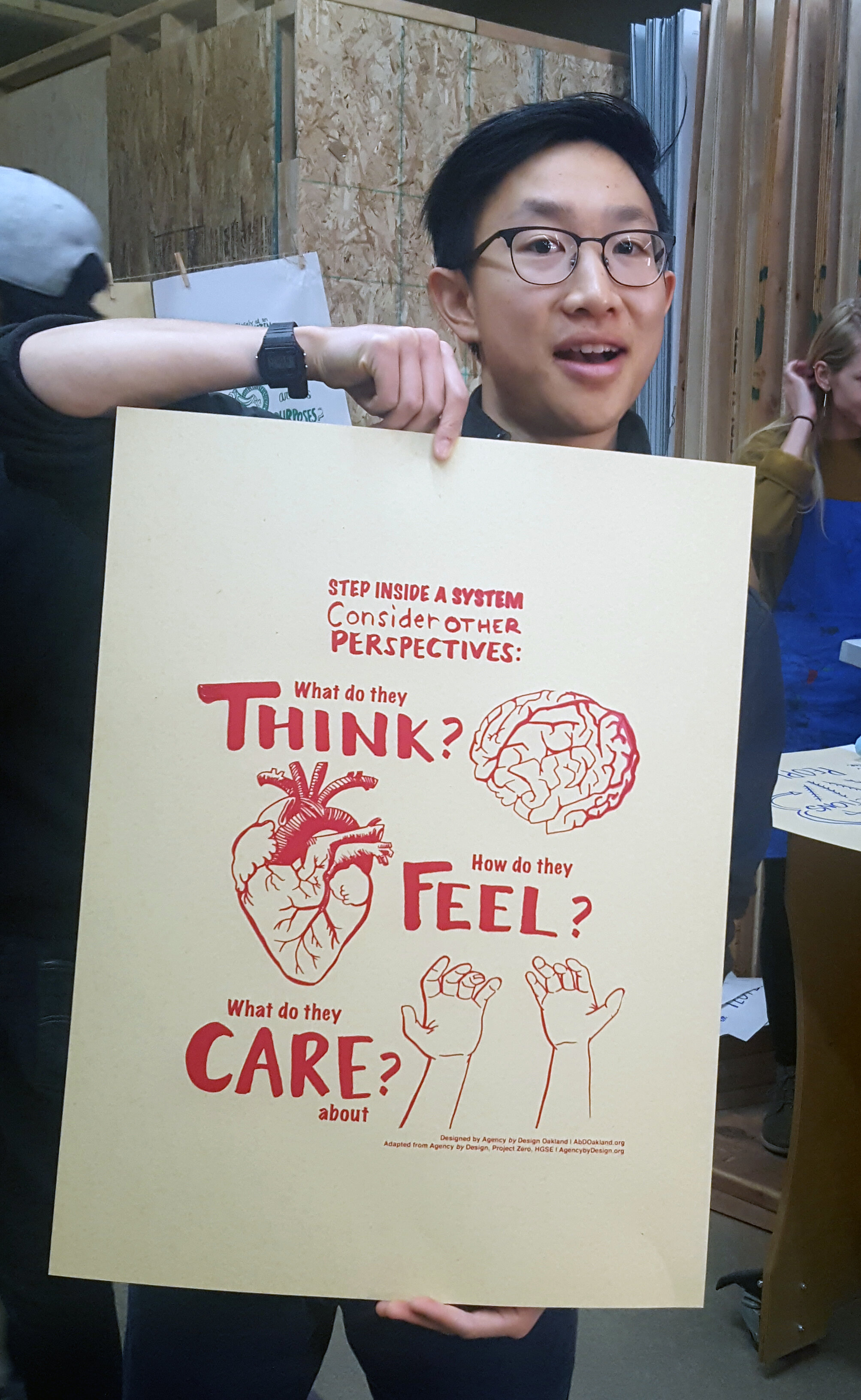By Brooke Toczylowski, Co-Director, Agency by Design Oakland
Teaching is designing, and building empathy is core to the design process. Like planning lessons or engaging in ongoing assessment, Empathy Hacks should be a core part of one’s teaching practice.
This past week teacher fellows with the Agency by Design Oakland Fellowship have been engaging in one such Empathy Hack. After looking closely at and considering “What are the Parts Purposes & Complexities of distance learning?” the educators are now using the Think Feel Care thinking routine to guide them in interviewing a student or family member on their experience of the system of distance learning.
In a team meeting with Community Day School, educator Michael Gebreslassie shared that he chose to do this by asking one of his students, Jared, to draw his experience of distance learning. Michael told us that Jared wanted the drawing to look dark in order to represent how he feels, and that he’s bored by the same thing day after day.
"Distance learning is the same screen and same window, every day.”
Jared, a student at Community Day School, an alternative public school in Oakland, visually represents his experience of distance learning.
Using the drawing, as well as their prior experiences with Jared (with whom all had worked), the team was asked to take on his perspective and consider the following questions:
Think: How does this person understand this system (distance learning), and their role within it?
Feel: What is this person’s emotional response to the system, and to their position within in?
Care: What are this person’s values, priorities, or motivations with regard to the system? What is important to this person?
The educators shared that Jared is a “why person,” someone who needs to understand the purpose behind an assignment or experience. But during distance learning, where the purpose of many activities are elusive, maybe he’s not sure it matters. Educator Elisabeth Barnett imagined Jared saying, “Does distance learning matter? Is this feeding into what I can do with my future? “ Another team member, Trey Keeve, the English teacher and also a poet, took it to another level, and imagined this student’s experience in the first person. Listen to hear Trey perform his incredibly moving piece:
Transcript: “I am an artist and I have been cut off from everything that inspires and motivates me. I am a tactile learner and now my hands only touch computer keys. I like to paint trees at times, but now I can only see the ones from my window. The window controls what I see, as does my computer. I don’t have the freedom of fingers to feel, the freedom of eyes to see beyond these windows. I am an artist suffocated, cut off, uninspired. To remain in this place. And yet I am stuck. I would rather fail than succeed in this. I valued in-person education more than I thought. I took it for granted. I need to get outside, I need to feel the wind on my skin. I need to see my friends laugh in person. I need to hear their sounds as they manifest and not as they are digitized and sent through wires. I need to be in a classroom surrounded by tacky posters, art supplies, and people.”
After a deep breath to take in each others’ reflections and appreciate the deep empathy work they had just engaged in, the Community Day School team started brainstorming.
They envisioned care packages of art materials for students to express themselves!
They imagined ecological projects in the park examining and drawing specimens!
They conjured up ideas for interdisciplinary Math, Science & English projects using Design Thinking!
The zoom mood slowly shifted—the educators felt lighter, and ready, and eager.
Because Empathy leads to Hope.
“I really didn’t want to be in another zoom today. But I didn’t know this is what I needed.” Teacher, Community Day School
Empathy building is a part of exploring complexity, one of three capacities in the Agency by Design framework, which supports cultivating a sensitivity to design and ultimately—maker empowerment. Exploring Complexity is about systems thinking, including looking at which players are involved in a given system and understanding different perspectives within it. Learn more about the framework here.
Empathy Hacks
Think Feel Care Thinking Routine: Choose a learner whose perspective you want to explore. Set a timer for 5-10 minutes and quietly reflect on paper. Consider how you want to organize your thinking—stream of consciousness, three columns, a concept map? When you’re done, be sure to notice your biases, what assumptions you may have made, and what you’re now curious to go learn more about.
Lawrence Teng, a 19’ - 20’ Agency by Design Oakland Teacher Fellow, holds up a poster he just screenprinted of the Think, Feel, Care thinking routine. Download a PDF of this design below.
Shadow a Student: Join a student on their zoom schedule for the day. Inspired by SchoolRetool.org.
Class Activity/Assessment: Invite learners to draw a picture of their distance learning experience and share out. Inspired by Community Day School educator, Michael Gebreslassie.
Interview a Student, Parent or Guardian. Give them a call, use a series of text messages, or drop by their home for a socially distant chat.
Community Walks. Invite (and stipend!) students to design and organize a day of professional development for students where the learners lead workshops, walks, and discussions within their own communities. Oakland International High School is a leader in student-led community walks. Learn more here.
And here are few more of our favorite Empathy Tools from the Design Thinking world:
The d.school’s Liberatory Design Cards go deep into mindsets—they’re an essential tool with a free download. Use Ideo’s Travel Pack cards for creative ideas to get you thinking outside the box, like “Try it Yourself,” where you gain empathy by trying out someone’s favorite activity or hobby for a week. And don’t miss out on Lesley-Ann Noel’s “The Designer’s Critical Alphabet,” a comprehensive vocab lesson.





